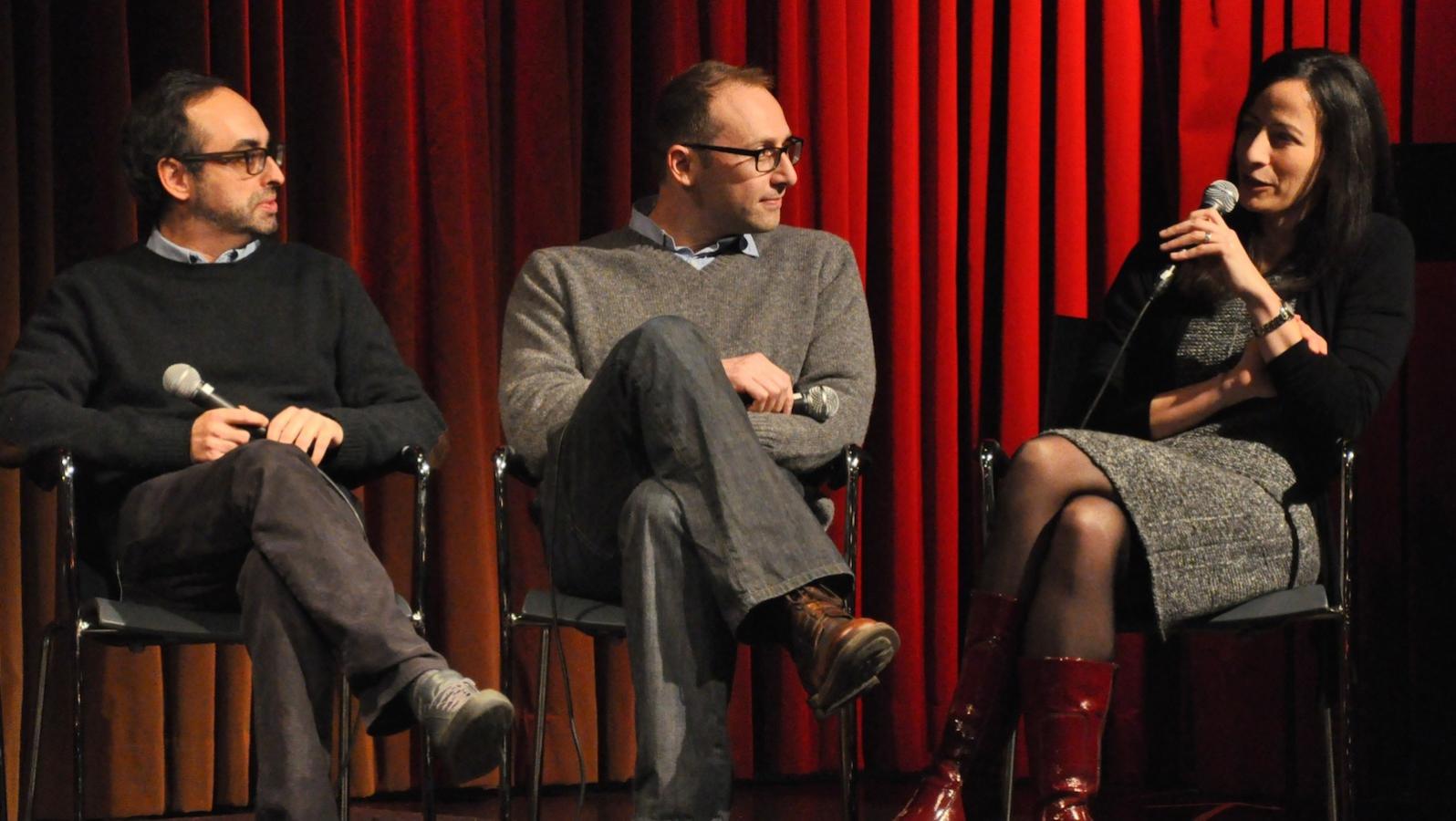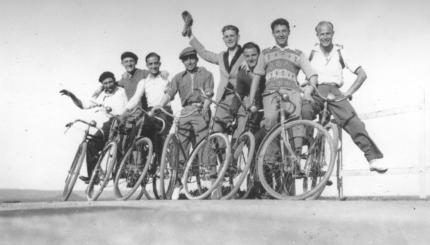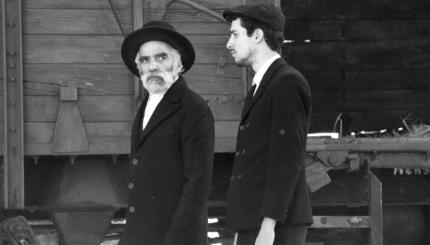“Look at me,” the larky protagonist of Saul Bellow’s The Adventures of Augie March (1953) announces, “I’m going everywhere!” And, indeed, Augie did, with a picaresque energy that reminds readers of Huck Finn and with a voice entirely, wonderfully, his own. Bellow’s urban Jewish style forced the highfalutin and the street savvy to share floor space (often in a single paragraph), and in the process, made serious writing about American Jews possible.
Ironically enough, Ravelstein, Bellow’s last novel, was published in 2000, at the beginning of the 21st century. Bellow himself died five years later, but not before passing the Jewish-American fiction-writing torch.
Granted, my emphasis on new writers in our new century is arbitrary. Writers who established themselves in the 1960s and ’70s are still hard at work. One thinks, for example, of Philip Roth (The Plot Against America, 2004) and Cynthia Ozick (Heir to the Glimmering World, 2004). Still, “going everywhere” means very different things to the generation of emerging Jewish-American writers. They are, as they should be, a raucous and diverse bunch, and one can say of them what was once said about the 20th century triumvirate of Bellow, Roth, and Malamud–namely, that their Jewish-Jewish fiction is hard to define but easy to recognize.
“The Russian (Jews) Are Coming!”
The late Irving Howe once declared that Jewish-American fiction was dying, if not completely dead, because the only story it could tell was how immigrant Jewish sons became fully assimilated Americans. No doubt Howe would have changed his mind had he lived long enough to read the work of Russian émigrés such as Gary Shteyngart, Lara Vapnyar, and David Bezmozgis.
To be strangers in a strange land, exiles wandering the earth, in a word, to be alienated perfectly described the condition of Jews in the modern world. One thinks of Kafka in Prague, of Proust in Paris, and of virtually every New York intellectual who wrote for Partisan Review. But the new crop of Russian-Jewish writers differs from those who never imagined taking six-hour plane rides back to Moscow. The new crop do, and if Gary Shteyngart is to be believed, they do it often–even as they are busily furthering their careers in America. They continue to live, in short, between two worlds, no longer Russian but not yet fully Americanized.
Moreover, there is a feel about the new Russian Jews that differs substantially from early 20th-century immigrants. Shteyngart’s thick, wonderfully edgy novel, The Russian Debutante’s Handbook (2003) goes almost everywhere (or at least from Manhattan to Eastern Europe) stirring up a heady brew of vivid characters and thickly textured language. Here, I would argue, is Augie’s long-lost cousin.
Lara Vapnyar’s There are Jews in My House (2003) is a collection of quietly intense coming-of-age stories that strip both language and emotion to the bone. David Bezmozgis’ Natasha and Other Stories (2004) often puts his newly arrived Russian immigrants in Canada where disappointments wear many faces.
Tradition Reborn
One cannot help noticing that observant Jewish characters are no longer stuck into novels only to be roundly dismissed or to provide moments of cheap comic relief. The sociological saw about children seeking to recover what their parents once cast off has turned out to be true for many young Jewish-American writers and for the fictions they write.
Dara Horn made her literary debut with In the Image (2003) a novel that used photographs and artfully constructed doll houses to explore the ways “images” both fix and formulate the past, including the Holocaust. Horn’s new novel The World to Come (2006) combines her deep interest in mystical Yiddish texts (particularly those of the author Der Nister), with the story about a stolen Chagall painting. Tova Mirvis’s The Outside World (2004) continues the sociological explorations of Orthodox Jewry she began with The Ladies Auxiliary (1999) this time in a tale set largely in Brooklyn rather than in the Memphis of her childhood and first novel.
If Horn and Mirvis, like slightly older writers such as Rebecca Goldstein and Allegra Goodman, focus on characters who struggle within the restrictions of traditional Judaism, there are a group of writers who may have been raised in Orthodox homes but whose characters eventually leave the fold, whether this is reflected in the tightly constructed short stories of Nathan Englander’s For the Relief of Unbearable Urges (1999), one of which brings a man to implore his rebbe to permit him to visit a prostitute; the semi-autobiographical conflicts outlined in Pearl Abraham’s The Romance Reader (1995), in which the novel’s young female protagonist leaves her father’s Hasidic house; the darkly bitter satire of Shalom Auslander’s Beware of God (2005)–one story deals with a religious boy’s guilty experience with masturbation; or in the exquisitely layered paragraphs of Aryeh Lev Stollman’s The Illuminated Soul (2003), itself a novel told in stories-within-stories.
There was a time when Englander was the hot new writer in town but this feeling has somewhat cooled as readers await his long-delayed second book. By contrast, Abraham continues to explore her Hasidic upbringing in ever more ambitious ways (see especially The Seventh Beggar, 2005) while Stollman remains a mannered, somewhat special taste. The jury is still out about Auslander, but I suspect his fiction will have limited appeal if his future stories continue, in the words of Eileen H. Watts, to start off like Bernard Malamud and end like Art Spiegelman.
Joan Leegant (An Hour in Paradise, 2003) is yet another twist that a return to traditional Judaism can take. She, along with others such as Naama Goldstein (The Place Will Comfort You, 2004), Risa Miller (Welcome to Heavenly Heights, 2003), and Ruhama King (Seven Blessings, 2003), tackle the experience of being transformed by Israel. A significant number of Leegant’s stories explore mysticism, whether set in Israel’s Safed or among Brooklyn’s Lubavitcher Hasidim; King’s female protagonist, who badly wants to find her soul mate, lives in an ultra-Orthodox section of Jerusalem; Goldstein’s stories demonstrate just how difficult it is for young protagonists, new to Israel, to “fit into” Israeli culture; while Miller explores the difficulties that a newly translated Jewish-American family faces in a West Bank settlement.
I end this section with Jonathan Rosen. Rosen’s easy familiarity with Jewish ideas is everywhere on display in his memoir-essay, The Talmud and the Internet (2001) and that spirit marks his rounded portrait of a vulnerable female rabbi in his most recent novel, Joy Comes in the Morning (2004). Deborah Green is unmarried and not at all sure about her role as a pasturing rabbi, but it is precisely these conflicts that make for a satisfying piece of fiction. This is Jewish-American writing that should not have been possible–that is, if Irving Howe were right–but that gloriously is.
The Secular Jewish-American Past is Never Completely Past
With so much talk about Jewish-American writers and their characters reconnecting with Judaism, I suspect that some are wondering if social realism of the sort Philip Roth did so brilliantly in Goodbye, Columbus (1959) still has a place. It does, although perhaps well off to the sidelines. Joseph Epstein, widely known as a former editor of American Scholar and a frequent contributor to Commentary magazine, continues to publish collections of his short stories (Fabulous Small Jews, 2004), and Gerald Shapiro (Bad Jews, 2004), considerably younger than Epstein, writes old-fashioned, fall-down funny stories that prove it’s still possible to take the comic measure of Jewish foodstuffs and squabbling Jewish families.
The New (Married) Kids on the Literary Block
No survey of Jewish-American fiction in the 21st century would be complete without mentioning a young couple so talented and certainly so well-connected that attention, often seeped in controversy, doesn’t wait until the ink dries from their pages. I am speaking of course about Jonathan Safron Foer (Everything is Illuminated, 2003; Extremely Loud and Incredibly Close, 2005) and Nicole Krauss (Man Walks Into a Room, 2003; The History of Love, 2005).
Foer came to wide attention for his first novel, which features a protagonist named Jonathan Safran Foer. Trying to track down a story about his grandfather and how he managed to survive the Holocaust, Foer, the character, make his way to the Ukraine where he teams up with a colorful Ukrainian guide and where he mines the layers of Jewish history as if it were a tall tale from the Old Southwest. Neither Foer the character nor Foer the author ever find the “facts” but find, instead, what may be even more valuable: the Truth that first-rate fiction always tells.
Krauss’ first novel, an exploration of amnesia, was generally praised but her second book, The History of Love, with multiple narrators and interlocking stories, was reviewed–often disparagingly–in high profile newspapers and magazines. Some were incensed that she played so fast-and-loose with history, particularly the sections dealing with Poland and the Holocaust while others found the novel both manipulative and ultimately sentimental. By contrast, general readers by the thousands loved it.
Still Going Everywhere
If Jewish-American literature in the early years of the 21st century seems to be “going everywhere,” that’s a good, exciting thing. We have, after all, many more decades before the dust settles. History will make judgments about which writers remain quick and which ones, alas, seem quite dead.
I don’t expect to be around in the 22nd century but the work of some of these writers just might.
Hasidic
Pronounced: khah-SID-ik, Origin: Hebrew, a stream within ultra-Orthodox Judaism that grew out of an 18th-century mystical revival movement.
Talmud
Pronounced: TALL-mud, Origin: Hebrew, the set of teachings and commentaries on the Torah that form the basis for Jewish law. Comprised of the Mishnah and the Gemara, it contains the opinions of thousands of rabbis from different periods in Jewish history.



